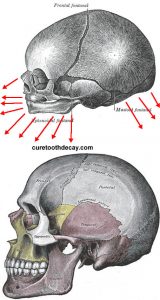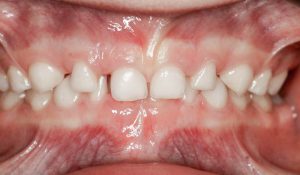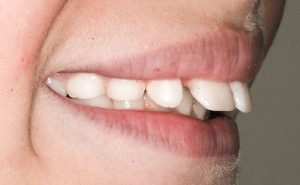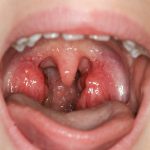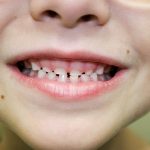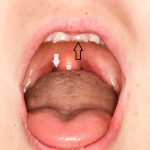(Section 1 of the Jaw Orthopedics Series)
An important aspect with children’s dentition is identifying their dental and jaw growth patterns, precisely during the rapid phase of growth. Here we will concentrate on childhood sleep apnea and its relation to the vertical dimension. This is the arbitrary vertical distance between the upper and lower jaws. If one considers the teeth as the columns in a room holding up the roof, then we can appreciate that the higher the ceiling, the more room we have for the tongue and the airway. A small and over-closed space inside the mouth and throat translates to less airway volume.
Airway means oxygen.
Oxygen means life and growth.
Many children under the age of 8 may exhibit a deep bite, and it is very easy for the parent or the pediatrician to identify this. 80% of jaw growth happens by age 8, therefore it is reasonable that this growth spurt window be utilized to treat a dysfunctional growth pattern.
Q: HOW DO PARENTS IDENTIFY A DEEP VERTICAL BITE?
A: Have the child bite down. You will see a deep bite and overlapping incisors: how the front teeth come together when the child bites down. If more than half of the height of the lower incisors are covered by the uppers, or if both upper and lower incisors have worn each other down, the child has a deep and over-closed bite.
- This bite should trigger an alarm. This is the dentition of a 5-year-old. Sleep apnea and grinding are an almost certain occurrence.
- This bite in an 8-year old requires definite appliance therapy, because along with the deep bite, the upper incisors are flared and the lower jaw is retruded (lagging behind).
Q: WHAT SIGNS POINT TOWARDS THE RISK OF SLEEP APNEA IN A CHILD?
A: Many of the following signs by themselves may not implicate sleep apnea. However, the more they occur simultaneously, the higher the risk for sleep apnea.
Snoring at night, large tonsils, hyperactivity, dark rings under the eyes, bedwetting, tooth crowding, a reduced vertical bite (see above) and nighttime grinding. Grinding in children is a sign of oxygen deficiency at night. From the perspective of jaw orthopedics, these children will also tend to have a retruded (backward) lower jaw, future crowding, and as they grow up, an unfavorable profile and TMJ problems.
- Enlarged tonsils can be easily seen when the child opens the mouth to the maximum, and stretches the tongue out, and says “AAAH”. In this case, the pharyngeal arch is large, but the tonsils are filling the space almost halfway. This classification is a class II. A class IV would look as if the tonsils are meeting at the midline and one cannot see the back of the throat any more.
- A typical deep bite coupled with severe tooth attrition. This phenomenon should by itself prompt any parent or physician to have the child seek functional jaw orthopedics consultation.
- This child has a combination of a low palate (small airway) and a reduced vertical dimension as testified by the worn down upper incisors.
Q: WHAT CAN WE DO IF WE SUSPECT SLEEP APNEA IN OUR CHILD?
A: Many conditions discussed above are not self-limiting, and children will not grow out of them. A constricted dental arch, a vertically closed bite, and a retruded lower jaw do not reverse as a child grows. If the child is treated early enough, between 5 and 8, functional jaw orthopedics will solve most of their jaw problems. In the case of hypertrophic tonsils and adenoids, these may shrink over the years, but do we take the chance? They are the main culprit in most cases. An ENT specialist has to evaluate the condition and remove them if needed. Many parents swear by it that this procedure has changed the life of their child overnight.
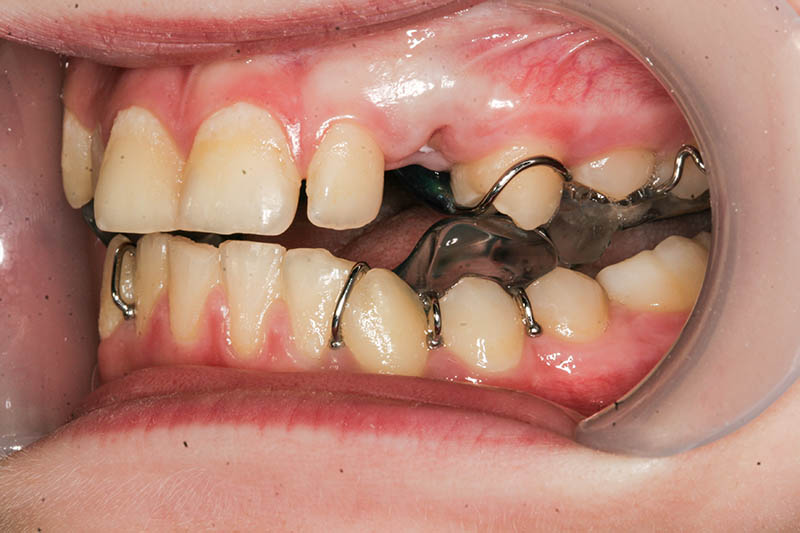 (See also section 2 of this series.)
(See also section 2 of this series.)
More resources on childhood sleep apnea and jaw orthopedics:

